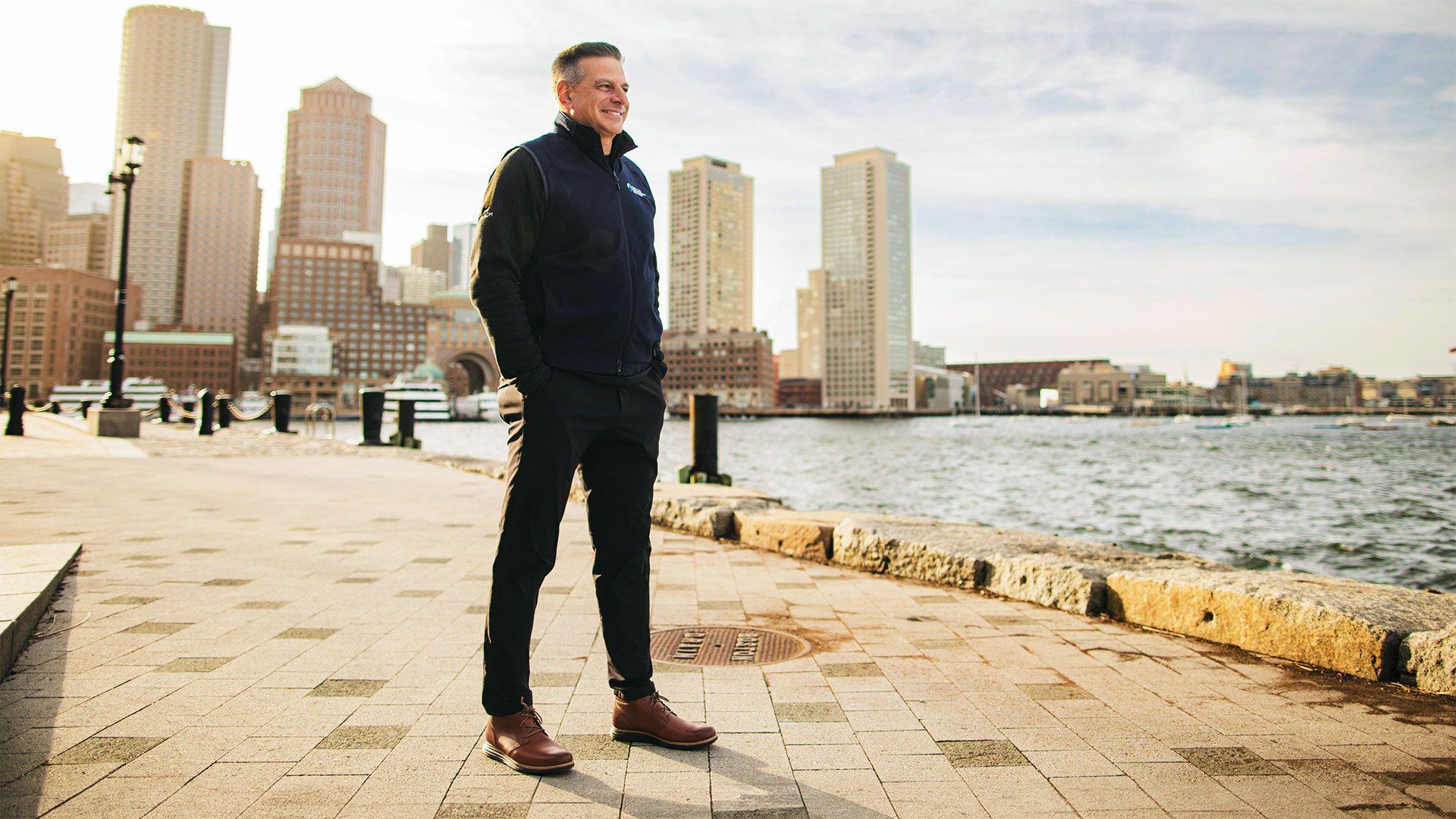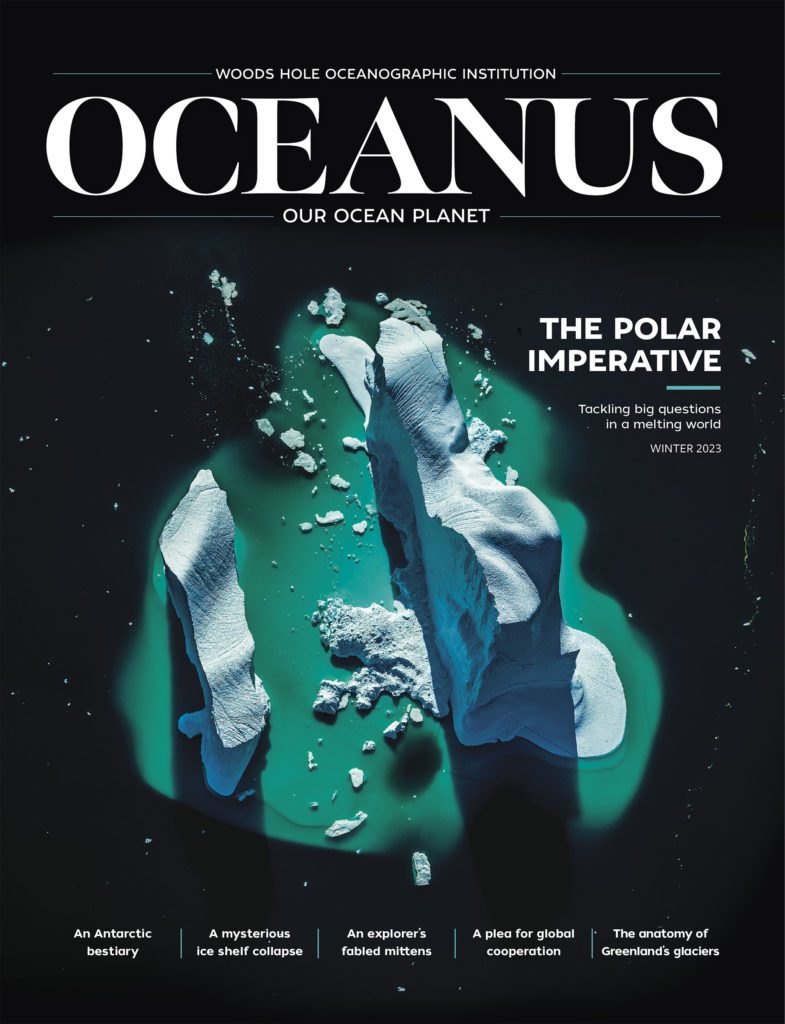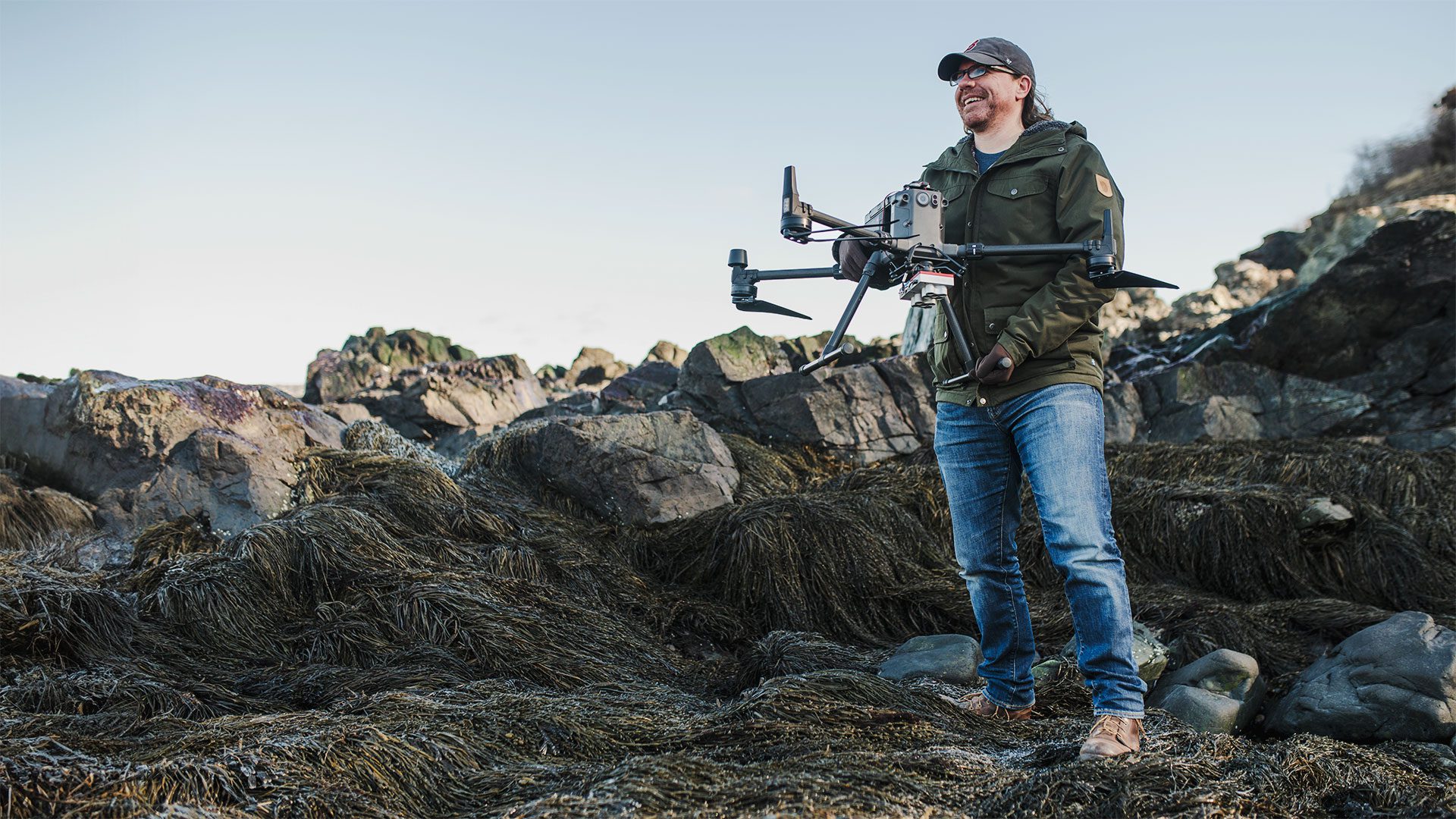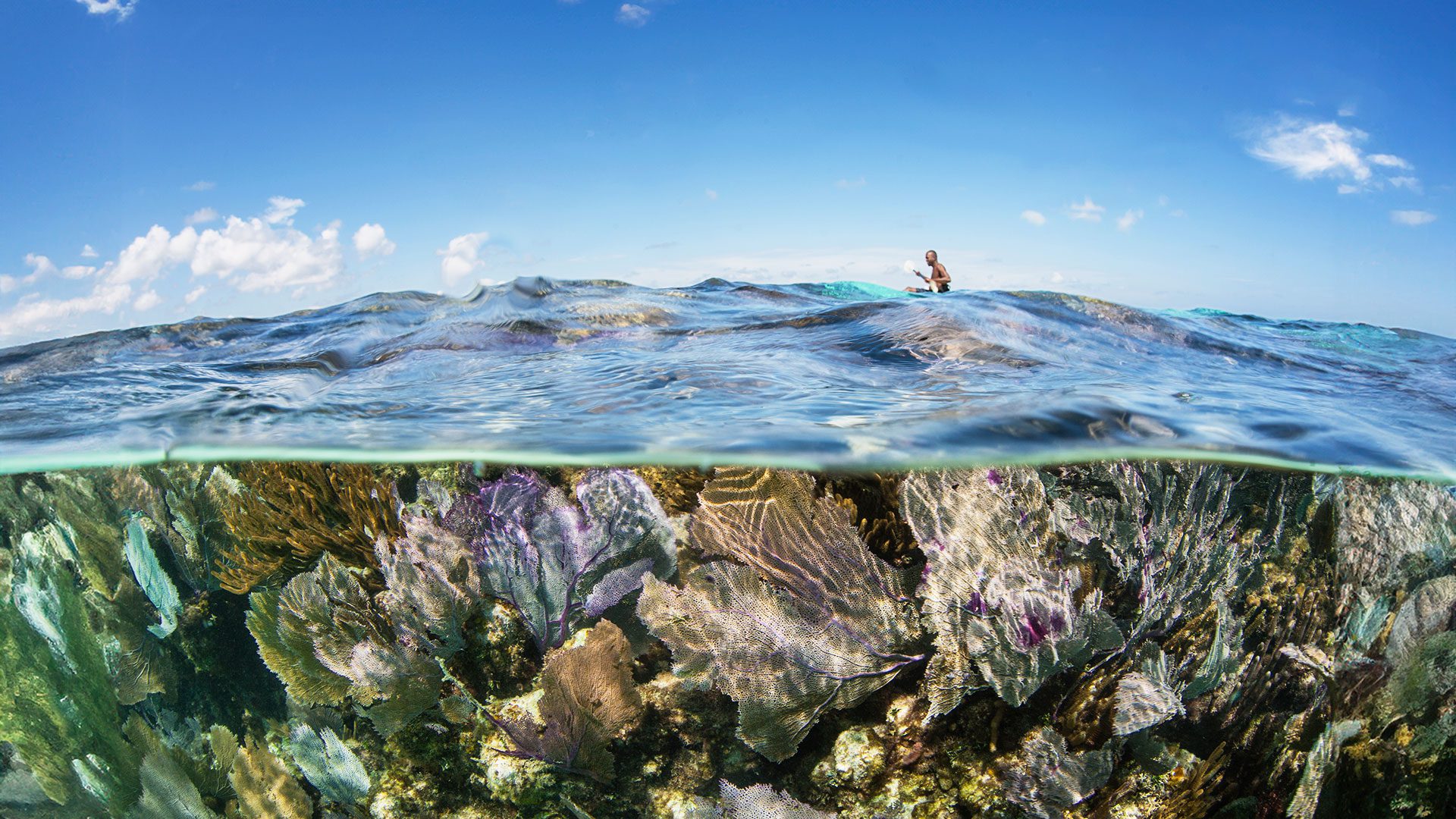
A new champion for ocean science
Gift from WHOI’s board chair Paul Salem to jump-start ocean-based climate solutions
Estimated reading time: 2 minutes
At this point, it’s almost a cliché to say that we know more about space than we know about the oceans. But like many clichés, it happens to be true. To Paul Salem, WHOI’s board chair as of January 2023, this suggests that perhaps we’ve been looking in the wrong direction. Not only is there so much to learn and to know about the ocean, but it’s a starry expanse unto itself.
About six months into his time as chair, Salem had the opportunity to dive in Alvin, WHOI’s famous human occupied submersible, and take a look around the watery universe beneath the waves.
Describing the experience of sinking toward the ocean floor, Salem said, “All of a sudden it gets black after 150 meters, and you see these alien lifeforms that look like they’re from Men in Black. When you get to the bottom, they turned a light on and all you see are starfish.”
“We’re spending $48 billion to go to the moon, and just a tiny fraction of that on the ocean. But it’s on our planet and we can’t survive without it.”
—WHOI’s board chair Paul Salem
“It was like going into space,” he added. “We’re spending $48 billion to go to the moon, and just a tiny fraction of that on the ocean. But it’s on our planet and we can’t survive without it.”
Luckily, as board chair and the donor of a recent $25 million gift to WHOI, Salem is working to ensure that both the ocean and the rest of us survive on our planet.
After retiring from private equity, Salem spent the last few years learning about climate change and the oceans—particularly how the ocean might offer some solutions in the fight against human-induced climate change.
Salem’s gift will be used to help jump-start climate solutions and projects. In particular, it will be used as “seed funding” for projects focused on environmental measurement reporting and verification (eMRV) and field trials for ocean-based carbon capture solutions, which could play an important role in helping to draw down carbon dioxide from the atmosphere.
“It’s really important that we have the best, independent scientists figuring out if this really works, if it is safe. If it really works, then who is going to be the referee to take it to scale? Who is going to be the Switzerland?” he asked. WHOI won’t play the role of referee, but it could help write the rule book by providing the foundational scientific understanding and real-time measurement capabilities to demonstrate how carbon flows through the ocean and how human interventions might affect that flow.
“There are really great solutions here; we’ve just got to figure them out,” Salem said. “Why the U.S. government isn’t throwing bazillions of dollars at this is beyond my belief, but people haven’t figured it out yet,” adding, “sometimes the easiest solutions are the simplest.”
Indeed, leveraging the power and genius inherent in the ocean is exactly the kind of simple but elegant work that scientists at WHOI are uniquely able to do, providing world-class research as well as leadership on exploring and protecting the ocean, without which, as Salem said, we can’t survive.
As a Massachusetts native and now seasonal Nantucketer, Salem said, “I drove through Woods Hole my whole life without ever knowing what they did here, but it’s a national treasure, and everyone should know what they do.”



